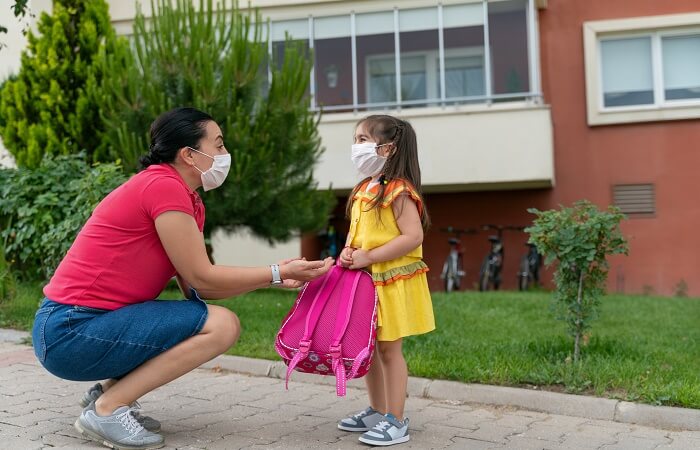Nothing is Normal about Going Back to School This Year
What does school during a pandemic mean for kids, parents and teachers?
What does school during a pandemic mean for kids, parents and teachers?

If you think about what K-12 school looked like before the pandemic hit, you might think of packed school buses, classrooms bursting with energetic classmates or teachers collaborating during in-person professional development days. None of that seems possible now.
As the pandemic forced districts across the country to go virtual last spring, parents suddenly had to scramble to adjust their workdays as kids stayed home. Teachers ended the year without being able to say goodbye in person. Seniors graduated online, losing a cherished rite of passage.
The scramble is back on for fall. It is clear that normal is out of reach, with coronavirus caseloads mounting in all but a handful of states. Raising first- and second-graders in a public school, I am among the millions of parents awaiting school district decisions with bated breath, as are the millions of teachers who fear their workplaces may be unsafe.
In considering opening schools back up, as a parent and one-time education professional, I wonder how physical distancing and hygiene can be enforced in crowded classrooms, even if everyone wears a mask? If cohort sizes are minimized to reduce transmission, how does the school accommodate in-person learning for all students? How do students share school supplies? What happens when a teacher gets sick?
School districts employ close to a half-million teachers in the U.S., and they must ensure safe working conditions, just as other employers do. Family needs, as well as ensuring equitable learning opportunities are available and accessible to all students, also are important.
Whether K-12 schools re-open to in-person instruction, or public health expert advice prevails and physically distanced or virtual learning remains the norm for the time being, there will be risks and trade-offs. Even the American Academy of Pediatrics shifted its stance on whether going back to school was the safer choice.
CDC guidance stipulates that maintaining virtual-only instruction provides the lowest risk to all. Even though children tend to be less at risk for serious complications, the alternatives, including small cohorts for in-person instruction, put education professionals in potential peril. School leaders are struggling to put together a plan that will be flexible yet robust enough to continue to meet the childcare, employment and education needs of their communities.
Working from home while juggling virtual learning seemed only somewhat feasible initially, and it’s not clear how workers can be expected to remain productive within that structure for months on end. As many have come to realize, there are no good options this year, and that goes for parents, teachers and students.
Regardless of what the end result looks like, it’s clear the pandemic has truly upended our lives, and the sense of normal won’t return anytime soon.
If you liked this post, sign up for a once-a-month digest of our best posts from Safety First.
With a century-long legacy, the National Safety Council is a global center for safety expertise. Let's work together to align resources. We look forward to learning about ways we can join efforts to expand safety everywhere!
There are no items in your cart